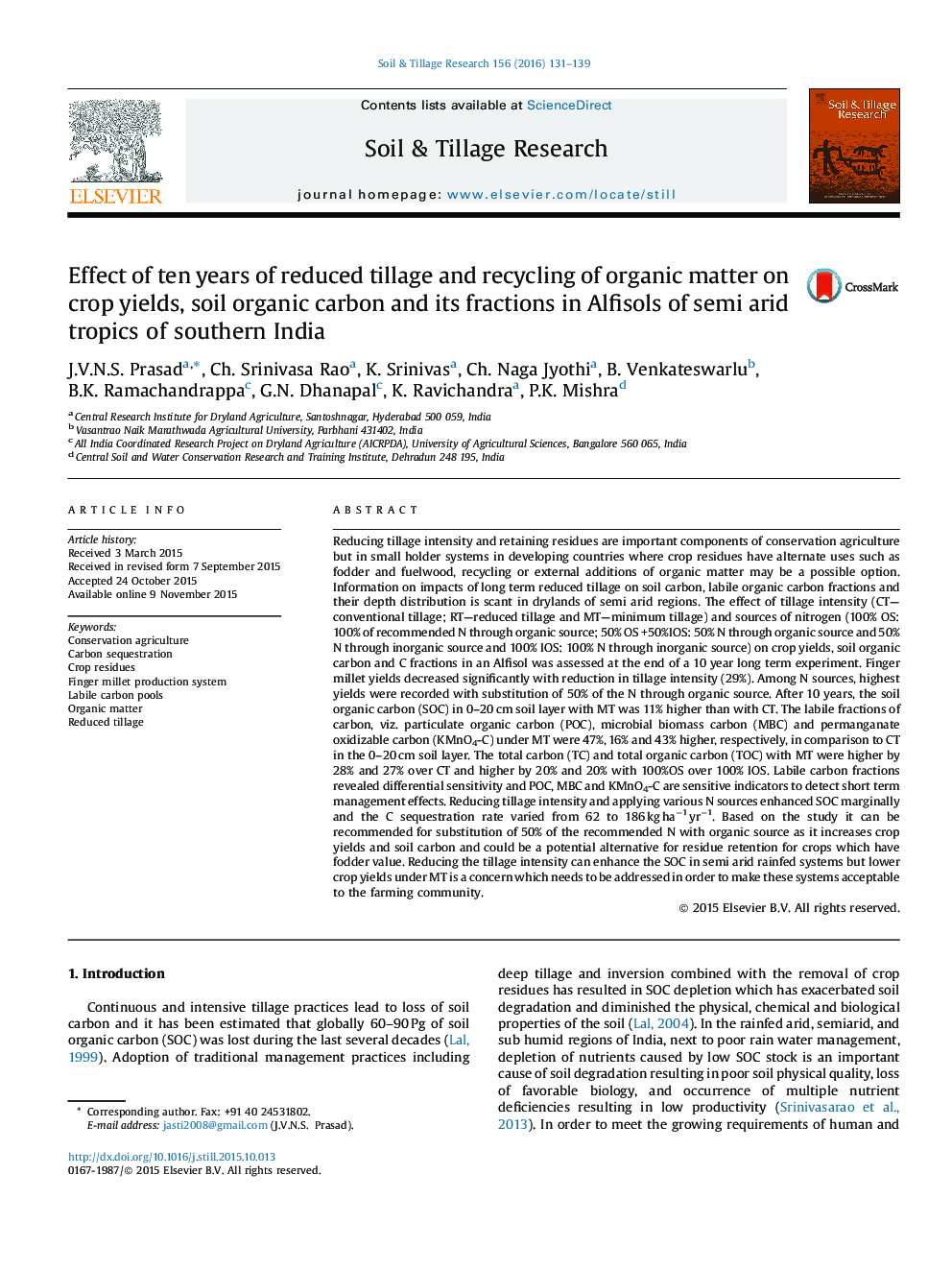| Article ID | Journal | Published Year | Pages | File Type |
|---|---|---|---|---|
| 305396 | Soil and Tillage Research | 2016 | 9 Pages |
•Reducing tillage intensity and nitrogen sources was assessed on crop yields, soil C.•Finger millet yields decreased with reduction in tillage intensity.•Total organic carbon and labile fractions were higher with MT and 100% OS.•The C sequestration rate varied from 62 to 186 kg ha−1 yr−1.•Organic matter recycling is an alternative for residue retention as a CA practice.
Reducing tillage intensity and retaining residues are important components of conservation agriculture but in small holder systems in developing countries where crop residues have alternate uses such as fodder and fuelwood, recycling or external additions of organic matter may be a possible option. Information on impacts of long term reduced tillage on soil carbon, labile organic carbon fractions and their depth distribution is scant in drylands of semi arid regions. The effect of tillage intensity (CT—conventional tillage; RT—reduced tillage and MT—minimum tillage) and sources of nitrogen (100% OS: 100% of recommended N through organic source; 50% OS +50%IOS: 50% N through organic source and 50% N through inorganic source and 100% IOS: 100% N through inorganic source) on crop yields, soil organic carbon and C fractions in an Alfisol was assessed at the end of a 10 year long term experiment. Finger millet yields decreased significantly with reduction in tillage intensity (29%). Among N sources, highest yields were recorded with substitution of 50% of the N through organic source. After 10 years, the soil organic carbon (SOC) in 0–20 cm soil layer with MT was 11% higher than with CT. The labile fractions of carbon, viz. particulate organic carbon (POC), microbial biomass carbon (MBC) and permanganate oxidizable carbon (KMnO4-C) under MT were 47%, 16% and 43% higher, respectively, in comparison to CT in the 0–20 cm soil layer. The total carbon (TC) and total organic carbon (TOC) with MT were higher by 28% and 27% over CT and higher by 20% and 20% with 100%OS over 100% IOS. Labile carbon fractions revealed differential sensitivity and POC, MBC and KMnO4-C are sensitive indicators to detect short term management effects. Reducing tillage intensity and applying various N sources enhanced SOC marginally and the C sequestration rate varied from 62 to 186 kg ha−1 yr−1. Based on the study it can be recommended for substitution of 50% of the recommended N with organic source as it increases crop yields and soil carbon and could be a potential alternative for residue retention for crops which have fodder value. Reducing the tillage intensity can enhance the SOC in semi arid rainfed systems but lower crop yields under MT is a concern which needs to be addressed in order to make these systems acceptable to the farming community.
